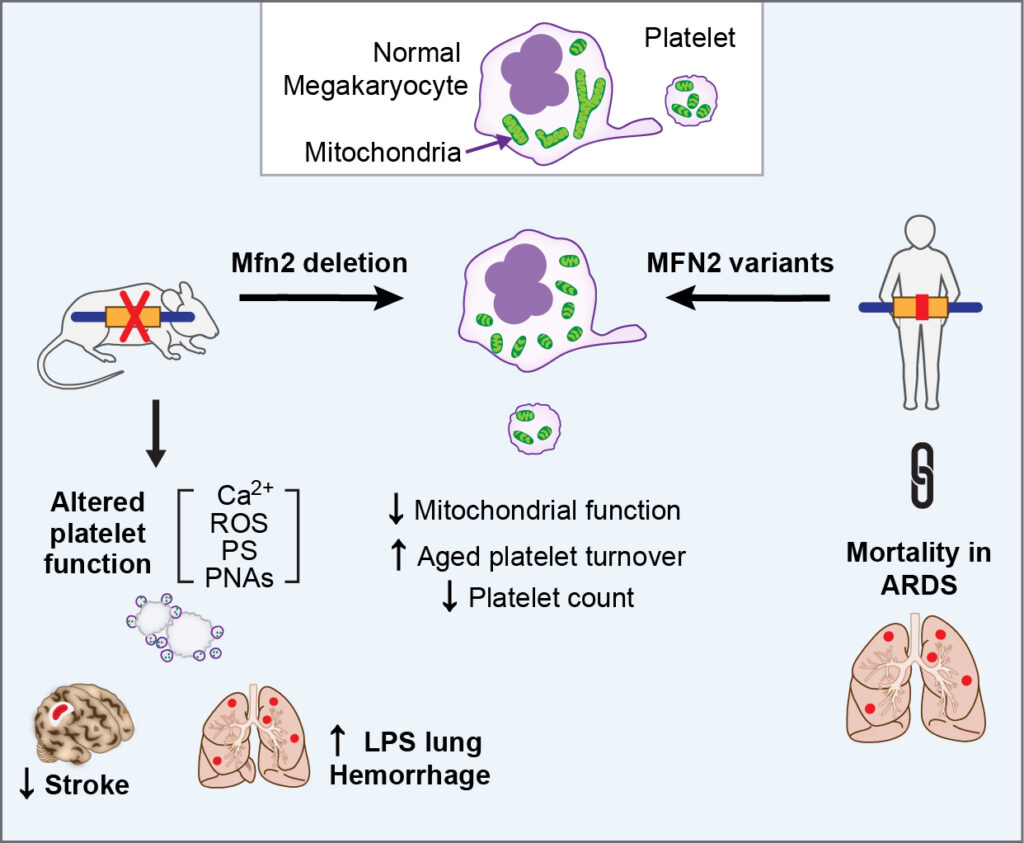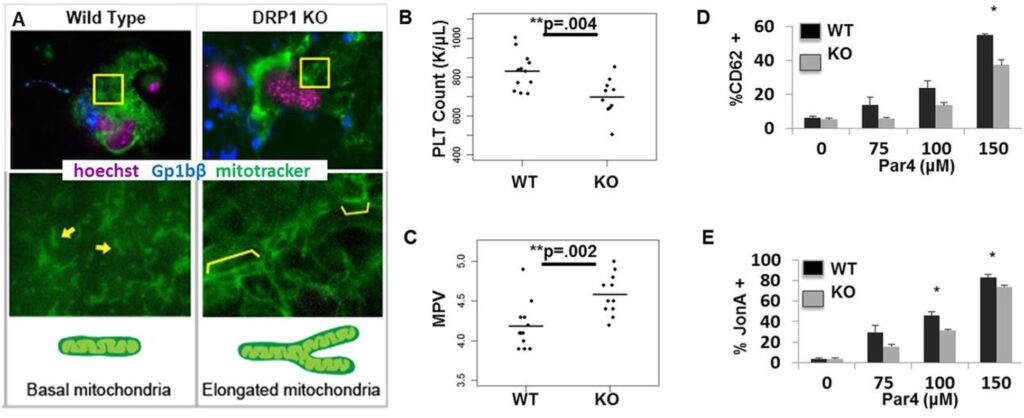Research projects
Mitochondrial dynamics in megakaryocytes and platelets
Mitochondria supply cells with energy and are maintained by proteins that balance mitochondrial division and fusion, including in platelets and megakaryocytes. We have found that the mitochondrial fusion protein MFN2 preserves mitochondrial phenotypes and platelet lifespan in human and mouse platelets, and that loss of MFN2 in platelets leads to bleeding in mouse models of lung inflammation. We have further shown that the mitochondrial fission protein DRP1 dramatically affects mitochondrial morphology in megakaryocytes and platelets, with consequences to platelet numbers and function. Our goals are to define how these and other mitochondrial fusion and fission proteins contribute to platelet numbers and function, and whether this pathway can be targeted to reduce cardiovascular disease.

Circ Res. 2024

ASH, 2017
The platelet transcriptome in health and disease
Platelets are born without a nucleus. Although lacking their own genomic DNA, they carry a complex repertoire of RNAs that they inherit from their parent cell, them megakaryocyte. Beginning with our landmark RNA-seq comparison of human and mouse platelet transcriptomes, we have continued to use RNA-seq in platelets for biomarker discovery, to elucidate genetic mechanisms, and to uncover biological insights into how platelets influence health and disease. For example, we used RNA-seq to define the genetic origin of Gray Platelet Syndrome. We have shown that platelet RNA changes accompany platelet differences in Huntington’s, metabolic disorders, aging, and viral infections such as influenza, Dengue, human and mouse sepsis, and most recently COVID-19. Our recently published longitudinal analysis of the platelet transcriptome in healthy individuals demonstrated that RNA expression and splicing differences between healthy individuals are generally stable up two 4 years. Using this knowledge, we further defined a novel platelet splice QTL that directly affects P-selectin splicing and ultimately the ratio of soluble to surface P-selectin expression.

CRISPR edited megakaryocytes for surveying platelet genes and genetic variants
Motivated by the many intriguing associations we have found between gene expression and platelet function, we recently developed a robust approach test platelet gene functions using highly efficient CRISPR/CAS9 knockout of genes in human CD34+ cells and their progeny megakaryocytes. Our published approach was presented at ISTH (2021) and was the subject of an international ASH journal club. An adaptation of our approach, which boasts homology directed repair (HDR) efficiencies of >95% for making uniform precise edits (mutations) in hematopoietic progenitors for variant function testing in human primary CD34+ cells and their progeny, was presented in an oral talk at ISTH the following year (2022). We are using this approach to functionally classify Variants of Unknown Significance in inherited platelet disorders, and mechanistically interrogate genetic mutations found in other hematologic diseases.
